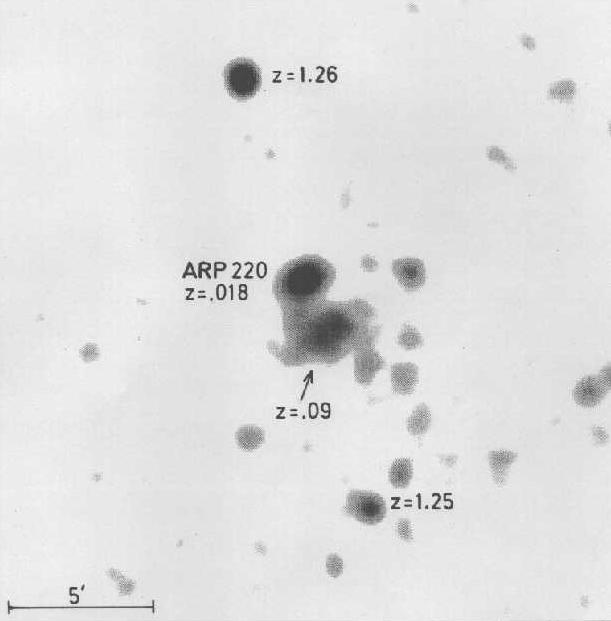Quasars and the Cosmic Distance Scale |
|
The discovery of high redshift quasars across the famous galaxy Arp 220 raises questions about distance scales in the universe.
The supposedly most luminous infrared galaxy in the universe, commonly known as Arp 220, has been the object of intensive study for many years. This time the 3 meter reflecting telescope of Lick Observatory on Mt. Hamilton in California was used to obtain spectra of X-ray sources in the immediate neighborhood of this exceedingly active galaxy. The two strongest, closest X-ray sources turned out to be quasars, i.e., quasi-stellar sources of radiation with highly redshifted lines in their spectra. The quasars are of much higher redshift and by conventional belief are supposed to be unrelated objects in the far background of the universe.

|
| Figure 1: The galaxy "Arp 220" |
H.C. Arp of the Max-Planck-Institute for Astrophysics and his colleagues E.M. Burbidge (University of California, San Diego) and Y. Chu (University of Science and Technology, Hefei, China) argue, however, that because of the exact alignment of the quasars across the galaxy, and the amazingly similar spectra of the quasars (they have almost exactly the same redshift) that they are material recently ejected from the active galaxy - as in many other similar cases now known. If this interpretation were to be accepted the fundamental assumption of extra galactic astronomy (that redshifts measure distances) would have to be questioned and the distances, luminosities and masses of all cosmological objects would need to be reconsidered.
Halton Arp
Further information:
| MPA-Home |